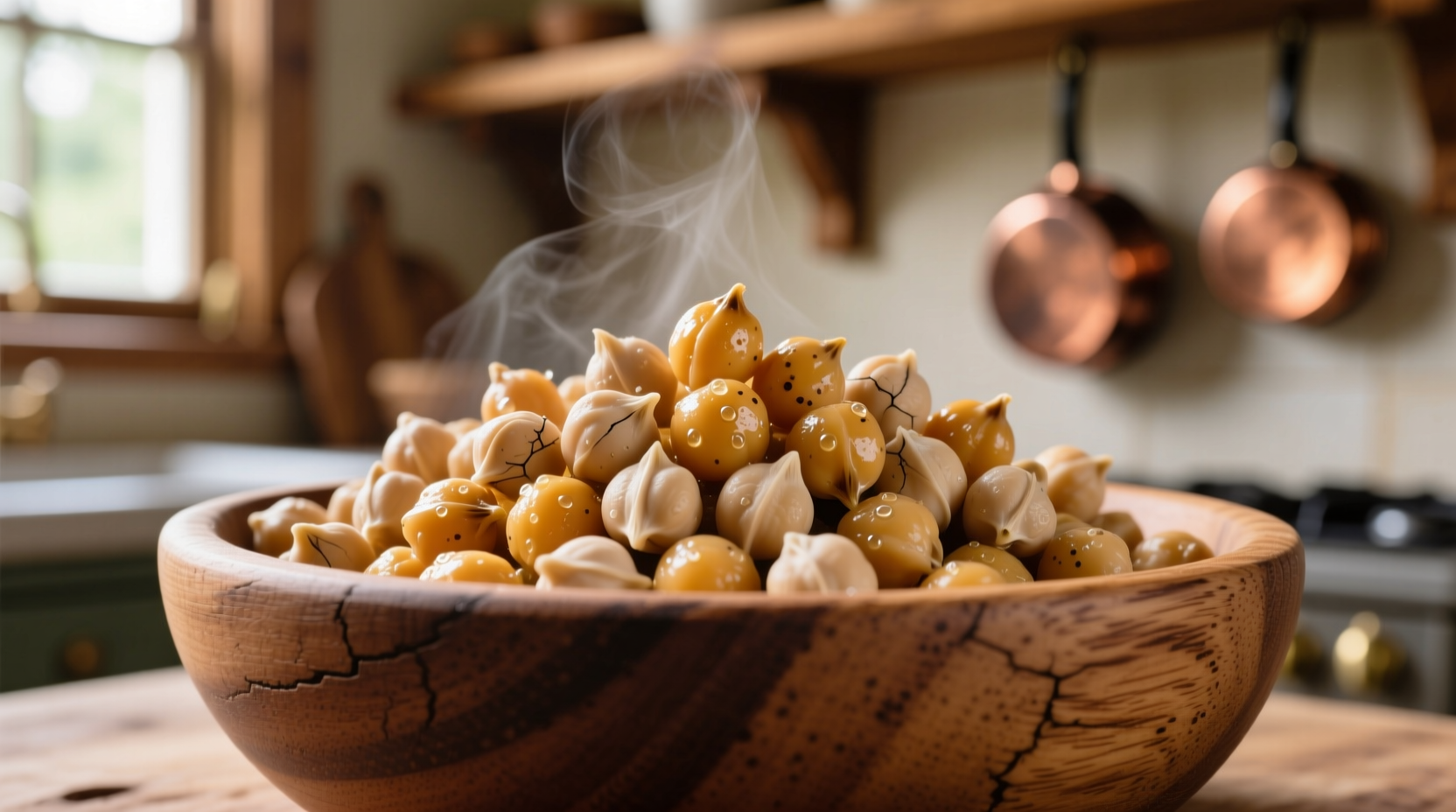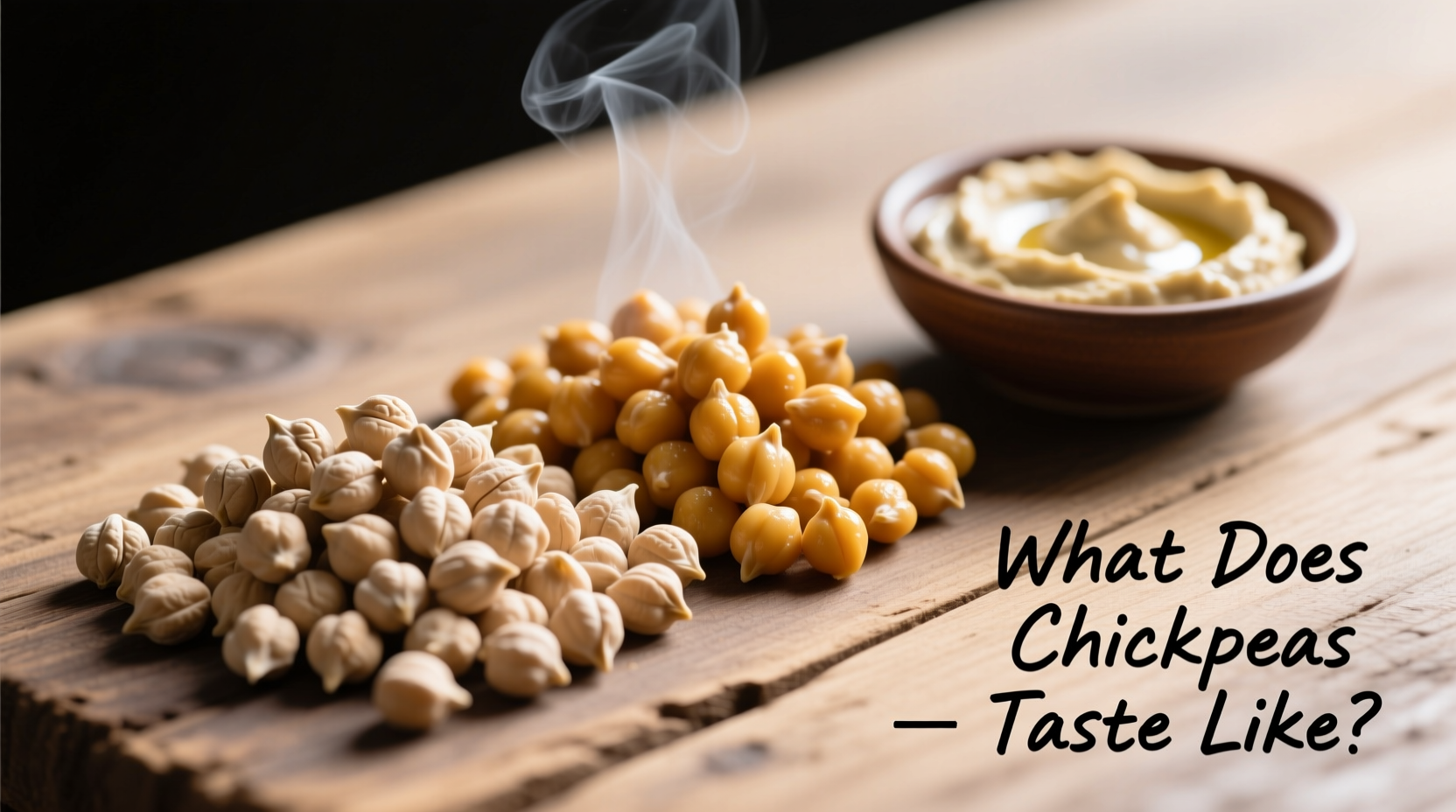Understanding chickpea flavor is essential for home cooks and culinary enthusiasts looking to maximize this ancient legume's potential. Whether you're preparing classic hummus, hearty stews, or innovative plant-based snacks, knowing exactly what chickpeas taste like helps you create balanced, delicious dishes every time.
The Fundamental Chickpea Flavor Profile
Raw chickpeas have a neutral, almost bland taste with minimal aroma. However, after proper cooking, they develop their characteristic flavor profile:
- Nutty essence - reminiscent of walnuts or hazelnuts
- Earthy undertones - similar to mushrooms or roasted root vegetables
- Subtle sweetness - more pronounced when roasted
- Mild bitterness - present in the skins but easily removed
This balanced flavor profile explains why chickpeas work so well across diverse culinary traditions from Mediterranean mezze to Indian curries. Their moderate flavor intensity allows them to complement rather than dominate other ingredients.

How Preparation Methods Transform Chickpea Flavor
The way you prepare chickpeas dramatically affects their final taste. Understanding these transformations helps you control the flavor outcome:
Boiled vs. Roasted Chickpeas
Boiling produces the classic chickpea flavor most people recognize - mild and slightly starchy. Roasting, however, triggers the Maillard reaction, creating deeper, more complex flavors:
- Boiled chickpeas: Creamy texture with subtle nuttiness, ideal for purees and stews
- Roasted chickpeas: Intensified nutty flavor with caramelized notes, perfect for snacks
- Pressure-cooked chickpeas: More uniform texture with slightly sweeter profile
Canned vs. Dried Chickpeas
While convenient, canned chickpeas often have a slightly metallic aftertaste from the can lining and a softer texture. Dried chickpeas cooked from scratch typically deliver cleaner flavor and better texture control. Soaking dried chickpeas in salted water before cooking improves both texture and flavor absorption.
| Legume Type | Flavor Profile | Texture Characteristics | Best Culinary Applications |
|---|---|---|---|
| Chickpeas | Nutty, earthy, subtly sweet | Creamy with slight graininess | Hummus, falafel, stews, roasted snacks |
| Black Beans | Earthy, mushroom-like, slightly sweet | Firm, smooth | Latin American dishes, soups, salads |
| Lentils | Peppery, earthy, mild bitterness | Varies by type (red=soft, green=firm) | Curries, soups, salads, side dishes |
| Cannellini Beans | Mild, nutty, slightly creamy | Buttery, smooth | Italian dishes, purees, salads |
Enhancing Chickpea Flavor Through Cooking Techniques
Professional chefs use specific techniques to maximize chickpea flavor. These methods transform chickpeas from bland to extraordinary:
Flavor Infusion Methods
Chickpeas act like flavor sponges. For optimal taste absorption:
- Add chickpeas to seasoned liquids during the last 15-20 minutes of cooking to prevent over-softening
- Use aromatic vegetable broths instead of plain water for cooking
- Incorporate acidic elements like lemon juice or vinegar at the end to brighten flavors
- Try the "toast then simmer" method - dry toast chickpeas before adding liquid for deeper flavor
Texture and Flavor Connection
Texture significantly impacts perceived flavor. For the best chickpea experience:
- Remove skins for ultra-smooth hummus with cleaner flavor
- Leave skins on for heartier stews where texture matters
- Roast at 400°F (200°C) for 20-25 minutes for maximum flavor development
Regional Flavor Adaptations of Chickpeas
Chickpeas showcase remarkable flavor versatility across global cuisines. Understanding these regional approaches helps you recreate authentic dishes:
- Middle Eastern cuisine: Paired with tahini, garlic, and lemon for bright, balanced hummus
- Indian cuisine: Simmered in spiced tomato gravy (chana masala) with ginger, cumin, and amchur
- Mediterranean dishes: Combined with olive oil, rosemary, and garlic in salads and stews
- Spanish cuisine: Featured in hearty cocidos with smoked paprika and saffron
According to research published in the Journal of Food Science, chickpeas contain glutamic acid (the same compound that gives umami to tomatoes and cheese), which explains their savory depth when properly prepared. This scientific insight validates traditional cooking methods that maximize this natural umami quality.
Common Flavor Misconceptions About Chickpeas
Several myths persist about chickpea flavor that can prevent cooks from using them effectively:
- Misconception: "Chickpeas taste bland and boring"
- Reality: Their mild flavor is actually an asset that allows them to absorb surrounding flavors beautifully
- Misconception: "All chickpeas taste the same"
- Reality: Desi chickpeas have stronger flavor than Kabuli varieties; cooking method dramatically affects final taste
- Misconception: "Chickpeas always taste starchy"
- Reality: Proper cooking eliminates excessive starchiness; roasting creates complex caramelized flavors
Practical Applications for Perfect Chickpea Flavor
Apply these evidence-based techniques to maximize chickpea flavor in your cooking:
- For creamy hummus: Use warm chickpeas, blend with tahini first, then add liquids gradually
- For crispy roasted chickpeas: Dry thoroughly, toss with oil and spices, roast at high heat
- For stews and curries: Add chickpeas toward the end of cooking to maintain texture
- For baking: Use aquafaba (chickpea cooking liquid) as egg substitute in meringues
Remember that chickpeas continue to absorb flavors even after cooking. For best results, let chickpea dishes rest for 30 minutes before serving to allow flavors to fully integrate.











 浙公网安备
33010002000092号
浙公网安备
33010002000092号 浙B2-20120091-4
浙B2-20120091-4